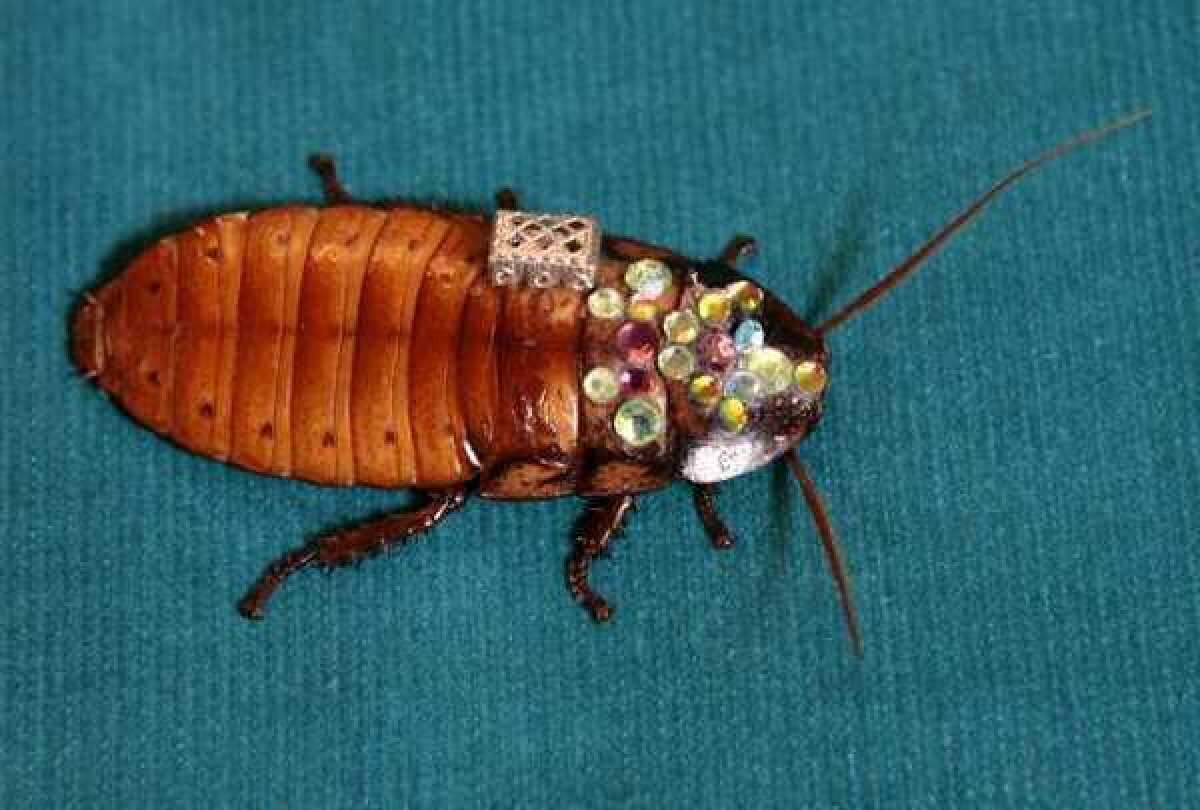Chip-toting cockroaches for search-and-rescue missions?

- Share via
Though far less devastating an enemy than the house-chewing termite or the apartment-infesting bedbug, the cockroach remains one of urban man’s most reviled insect enemies. Now, a team of engineers has learned to control these insects’ movements like a kid would a toy car.
Researchers have been working to build small, maneuverable robots that creep, leap and crawl like living critters – and such robots could be useful for search-and-rescue operations. But bug-sized bots are difficult to design and power.
Instead, the engineers took real, live bugs -- Madagascar hissing cockroaches, which, at roughly twice the length of your typical American urban variety, would be easier to manage than their smaller brethren.
The engineers outfitted the cockroaches with computer-chip “backpacks” and connected wires to their antennae and their cerci, sensory organs on their bellies that detect air movement behind them, thus allowing them to quickly escape approaching predators.
It’s not that different from what humans have been doing with larger-scale animals, said senior author Alper Bozkurt, an electrical engineering professor at North Carolina State University.
“We have been using horses for thousands of years,” Bozkurt said. “We had horseshoes, we had reins. Without that it would be very difficult to communicate with the horses.”
The wires delivered tiny electrical pulses to the cockroaches’ cerci to make them go forward. The antennae were for steering: Delivering a 3-volt pulse to the left antenna would make it turn right, and delivering one to the right would make it veer left. The scientists controlled the cockroaches’ movements with a joystick that radioed commands to the computer-chip backpack. Using this remote, they successfully maneuvered the roaches around an S-shaped curve.
“We were really happy with our first results,” Bozkurt said of the work, presented Aug. 28 at an IEEE Engineering in Medicine & Biology Society conference in San Diego. “People have been trying to control the locomotion of insects for a long time.”
Such controlled cockroaches could be potential allies, the researchers said. An army of chip-toting roaches could serve as search-and-rescue “biobots” that could get into hard-to-access places -- say, earthquake-shattered buildings to look for trapped victims. How’s that for a SWAT team?
Follow me on Twitter @aminawrite.




